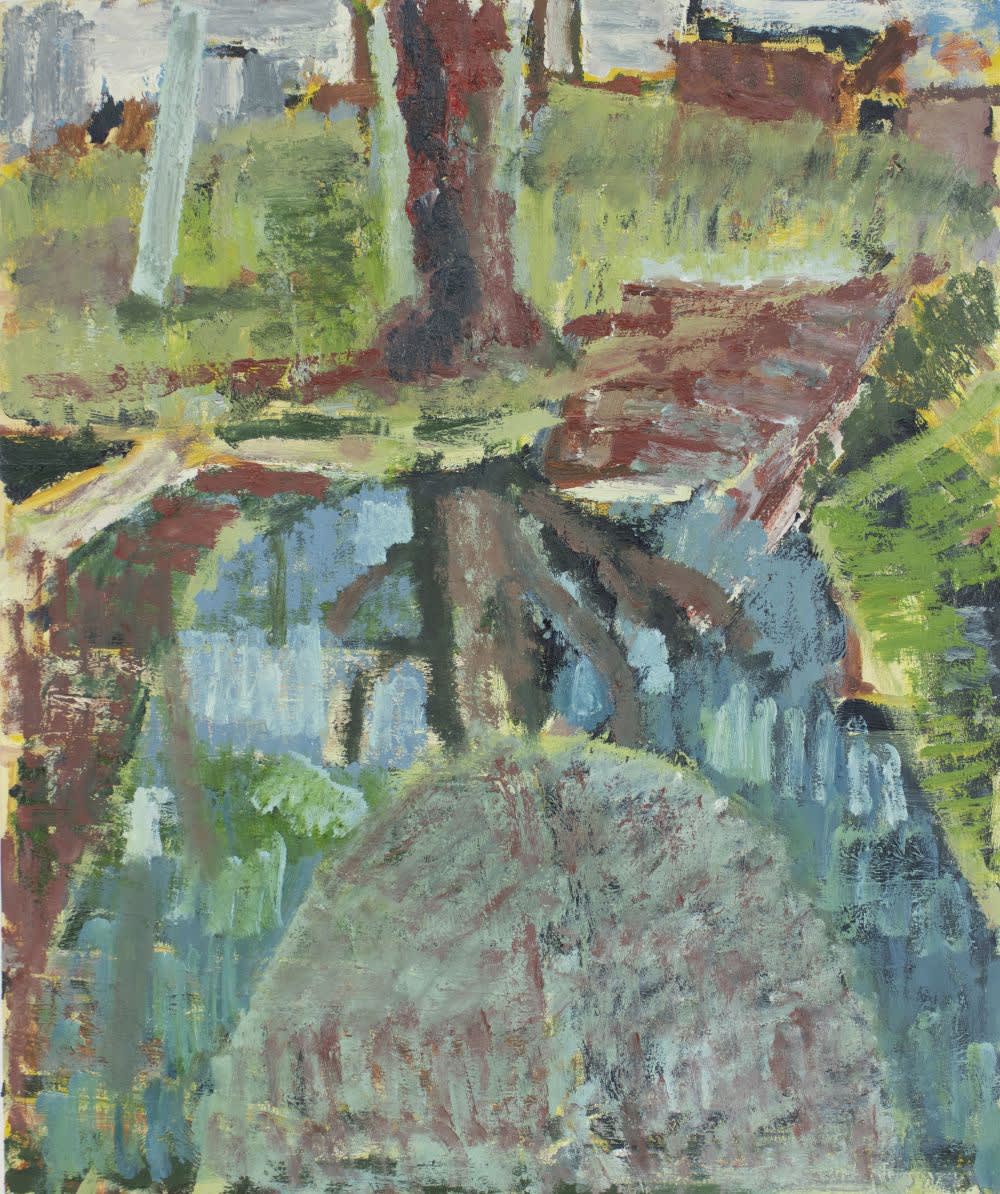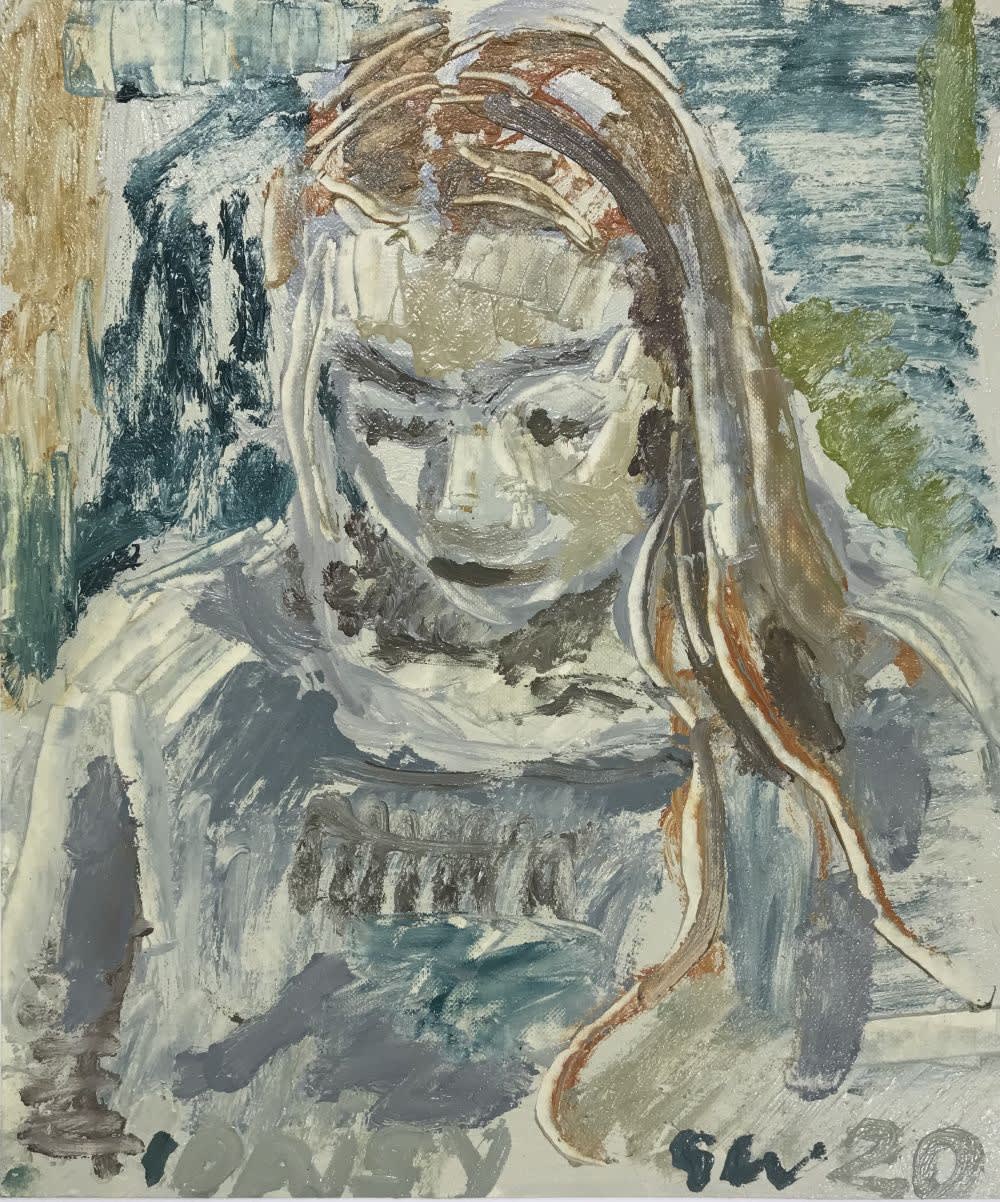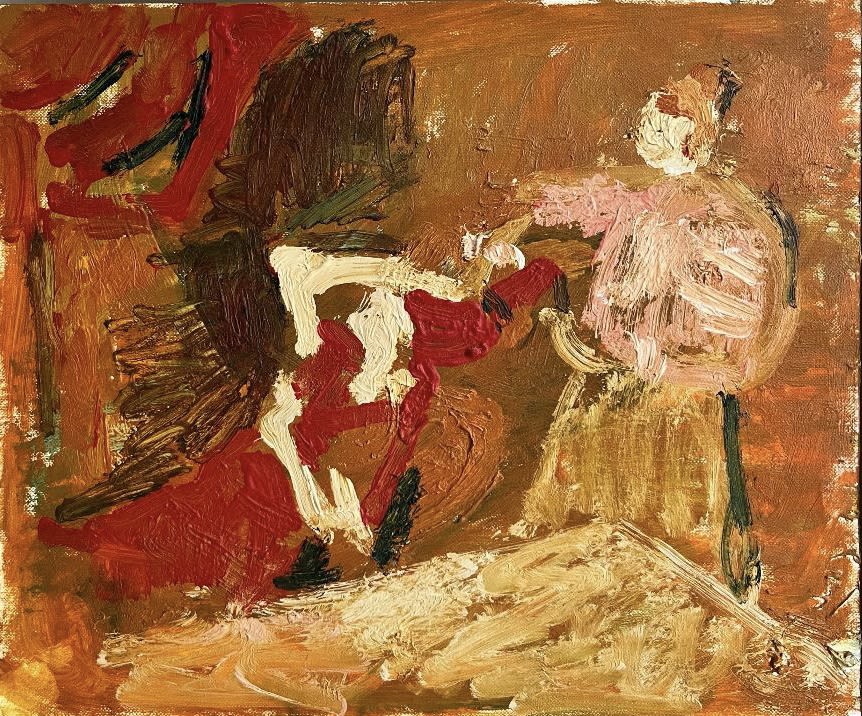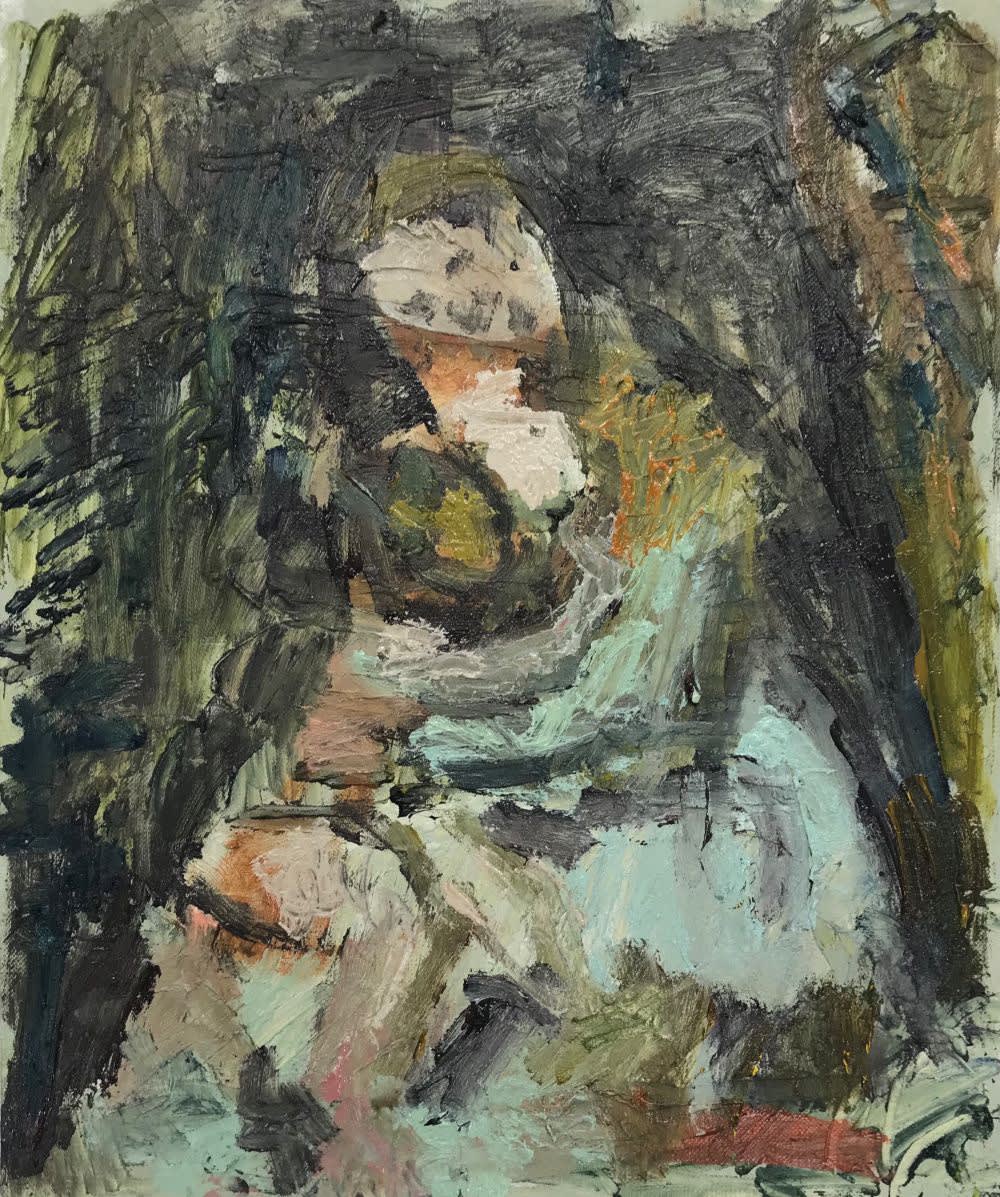We are delighted to share an article by
Grant Watson NEAC, one of our newest member artists, elected in summer 2023. Grant shares the tale of a painting that ‘quite literally took [his] breath away’ and how he subsequently missed the opportunity to meet its creator. The story is interspersed with images of Grant’s own paintings . . .
'Daisy's Puddle'
“We’re off on a trip tomorrow and there’s space for one more in the car”, said one of the students. I forget her name; she was one of a contingent of German students, who along with me, was studying at the Antonio Ratti Foundation in Como, in northern Italy by the beautiful Lakes.
She was being rather annoying by not actually telling me where they were going, “Just come you’ll like it”, she kept saying. Another museum in Milan, I thought. I’d been to most of them already and anyway, we were midway through a drawing workshop run by the painter Karel Appel. Karel, a crayon in each hand, couldn’t help himself from drawing on everyone’s work. A wonderful artist, I liked his attitude and he was funny and fun, I didn’t want to miss out.
I politely declined, determined not to play the game of ‘you’ll never guess where we’re going’. And yes, I’m sure you’ve guessed already, the trip was not to Milan, but in the other direction across the border to Switzerland and on to a grand Chalet in Rossinière, the home of Balthus. They were to spend the afternoon with him and his wife Setsuko, seeing his studio, witnessing the paintings and drawings on the go and shown around their most magnificent Chalet.
Daisy in Lockdown
Okay, so a big opportunity missed, but what made it even worse was that a couple of months before, I had encountered a Balthus painting that quite literally took my breath away. It was one of those defining moments, I’ve never forgotten it. To think I could have actually asked him in person how on earth he had managed to conjure up such a powerful and profoundly moving image was galling. The painting in question is ‘Le Chat au Miroir III' . . .
The painting had only just been completed in the studio that I failed to see. Regret aside, in June 1994, I had gone to The Lefevre Gallery to see a Balthus exhibition. It wasn’t exactly a big show, in fact ‘Le Chat au Miroir III’ was the only painting on display. This large painting, 180 x 170 cm, completely dominated the space, leaving me totally speechless. Time stood still and there was a large knot in my stomach. It was a pivotal moment for me and not one I can easily describe in words but from then on, I was determined to strive to make paintings that could match the visceral reaction I had just experienced. Easier said than done, I must say, but a good aim.
So, why had this painting moved me so much? It wasn’t to do with the subject matter (and I know he is a very controversial artist in this respect), nor his use of symbolism (the cat, the girl, the mirror) and it was nothing to do with his inner vision. All these aspects are interesting but for me, it was mostly to do with how he painted it.
Study After Degas
It seems a facile explanation, but I think it’s true. Paintings can encompass all sorts of ideas, issues, concepts and themes, which are all very well and good, but they tend to fall apart if you can’t get the paint to sit well on the canvas. For Balthus, it’s more than just the paint sitting well of course, through some sort of alchemic manipulation of paint, he sought and found a mysterious universal magic.
When I say, ‘it’s to do with how he painted it’, it might seem like I’m referring to his painting technique but I’m not. The painting’s influence on me didn’t make me rush back to the studio in order to mimic his technique. I rushed back to attempt to capture a similar resonance. I’ve been trying, and mainly failing, to do this ever since.
Like a writer, who devours book upon book, as an artist I do a comparable thing, I see a lot of art. It feeds the soul and nourishes my painting. Two paintings at the National Gallery are part of my staple diet and I go to them regularly. Degas’s ‘Combing the Hair’ and Titian’s ‘The Virgin suckling the infant Christ’. When I feel stuck they help me a lot. I often make studies of them, usually quick intuitive versions, where I’m trying to find the source of their magic and rhythm. I feel reassured and very grateful that I can see them any day I like.
Study After Titian
In contrast, 1994 was a long time ago and although I revisited the Balthus painting several times (I’m sure the gallery staff had grown weary of my constant presence), I haven’t seen it since. It’s now in a private collection somewhere in Asia, so there’s a good chance I’ll never see it again, but who knows . . .
I’d love to get close up to it again, a photo just won’t do. I keep inflicting my poor kids with old movies I haven’t seen since they were made, remembering them as great and only to realise (and be told) that, in actual fact, they’re pretty terrible. Perhaps to see ‘Le Chat au Miroir III’ again would be like that. A painting hopelessly trapped in the time and context I first saw it in.
I think not, it’s a classic movie.
'Every Time You Are Near'
Find out more about Grant Watson on his NEAC artist profile page where you will find a selection of his work available to view and buy online.
You will be able to see a selection of Grant’s paintings in the 2024 NEAC Annual Exhibition, and looking further ahead, he will be exhibiting ’In the footsteps of the East London Group’ from October to December 2024 at The Nunnery Gallery, in Bow, east London. The exhibition aims to bring together around 30 original paintings by members of the East London Group (ELG), alongside 20 new interpretations of the locations that preoccupied them around the environments of Bow, in east London. The ELG were a group of working-class artists, who created paintings from 1928 to 1936 of buildings, streets, and ways of life.
January 1, 2024






